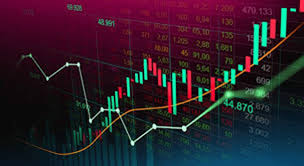
In the dynamic world of forex trading, understanding forex trading hours Top Forex Brokers the trading hours is crucial for every trader. The forex market operates 24 hours a day, five days a week, allowing traders to participate at any time. However, the market is divided into different trading sessions that are influenced by major financial centers around the globe. Knowing the specific trading hours can help traders optimize their strategies and increase their profit potential.
What Are Forex Trading Hours?
Forex trading hours refer to the times when the forex market is open for trading. The market operates continuously from Sunday evening to Friday evening, with price fluctuations occurring as different market participants engage in currency trading. The overlap of these trading sessions creates the highest volatility and trading opportunities.
The Four Major Trading Sessions
The forex market is divided into four major trading sessions, corresponding to the main financial centers: Sydney, Tokyo, London, and New York. Each session has unique characteristics and trading volumes.
1. Sydney Session
The Sydney session opens the forex market each week, starting at 10 PM GMT and closing at 7 AM GMT on Monday. During this session, the trading volume is generally lower compared to the subsequent sessions. However, it still presents opportunities for traders, particularly for currency pairs involving the Australian Dollar (AUD) and New Zealand Dollar (NZD).
2. Tokyo Session
Next is the Tokyo session, which runs from 12 AM GMT to 9 AM GMT. This session is particularly active for pairs involving the Japanese Yen (JPY). The Tokyo session sees a slight increase in trading volume and market activity as traders react to economic reports from Asia, especially those from Japan and China.
3. London Session
The London session overlaps with the end of the Tokyo session, running from 8 AM GMT to 5 PM GMT. It is the most important forex trading session due to the high trading volume and significant price movements. As London is one of the largest financial hubs in the world, many major financial institutions are active during this time, leading to increased liquidity and volatility.
4. New York Session

The New York session opens at 1 PM GMT and closes at 10 PM GMT. This session sees a further increase in trading activity as it overlaps with the London session for several hours, leading to the highest liquidity and volatility. The New York session is critical for traders focusing on the U.S. Dollar (USD) and economic reports released around this time, which can cause substantial market movements.
Understanding Market Overlaps
One of the most critical aspects of forex trading hours is the overlaps between these sessions. The most significant overlaps occur between the London/New York sessions and the Tokyo/London sessions.
London/New York Overlap
The overlap between the London and New York sessions is particularly advantageous for traders. It typically occurs from 1 PM GMT to 5 PM GMT, where liquidity and volatility are at their peak. During this time, major economic data releases from the U.S. and Europe can create significant market movement, providing ample trading opportunities.
Tokyo/London Overlap
Another important overlap is between the Tokyo and London sessions, which occurs from 8 AM GMT to 9 AM GMT. During this hour, traders can benefit from increased volatility as both Asian and European market participants are active. Currency pairs involving the JPY and EUR often see more significant movement during this time.
Best Times to Trade Forex
The best times to trade forex largely depend on your trading style and the currency pairs you focus on. Here are some general guidelines:
- High Volatility and Liquidity: Trade during the London/New York overlap for the most substantial price movements.
- Specific Currency Pairs: Focus on the Sydney session for AUD and NZD pairs, the Tokyo session for JPY pairs, the London session for EUR and GBP pairs, and the New York session for USD pairs.
- Avoid Off-Peak Times: Trading during quieter times, such as the Sydney session alone, may result in lower volatility and fewer trading opportunities.
Cautions for Traders
While understanding forex trading hours can enhance your trading strategy, it’s also essential to be aware of certain challenges:
- Market News: Significant economic news releases can create unexpected volatility, so stay informed about key dates and events that may impact the markets.
- Liquidity Risks: During off-peak hours, liquidity can drop significantly, resulting in slippage and wider spreads. Be cautious when placing trades during these times.
- Time Zone Differences: Be mindful of your local time zone and adjust your trading schedule accordingly to align with major market sessions.
Conclusion
In summary, understanding forex trading hours is vital for any trader looking to maximize their strategies and profits. By knowing the best times to trade, recognizing market overlaps, and considering how economic news affects trading, you can enhance your forex trading experience. With diligent planning and awareness, you can navigate the forex market effectively—taking full advantage of the opportunities it presents.




